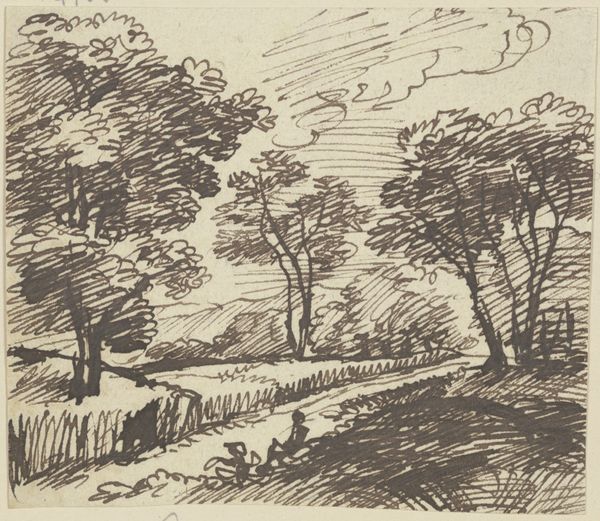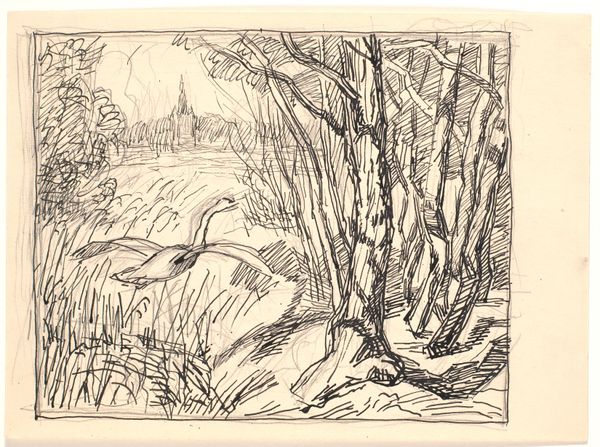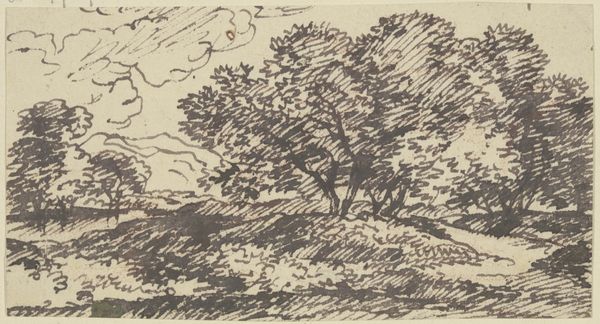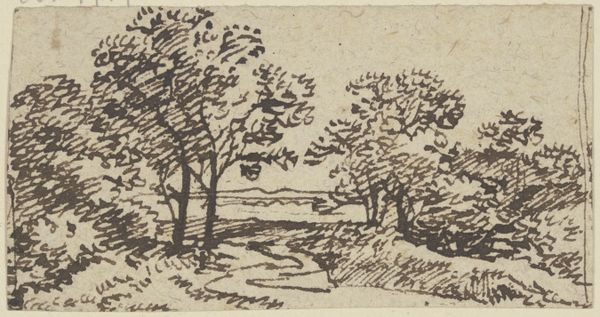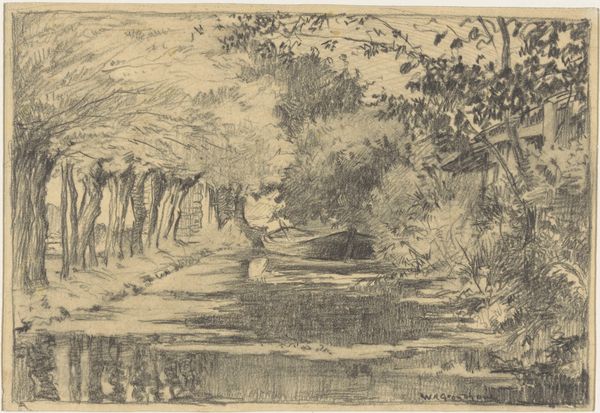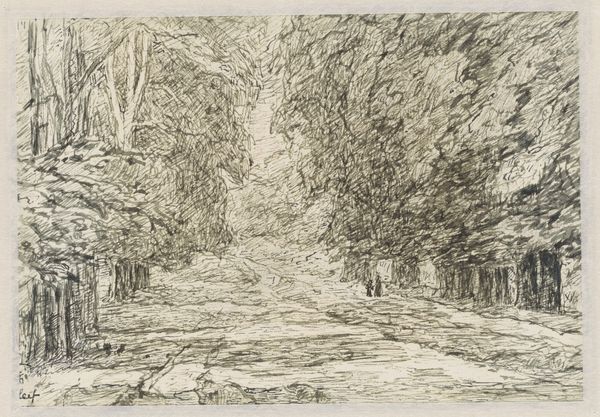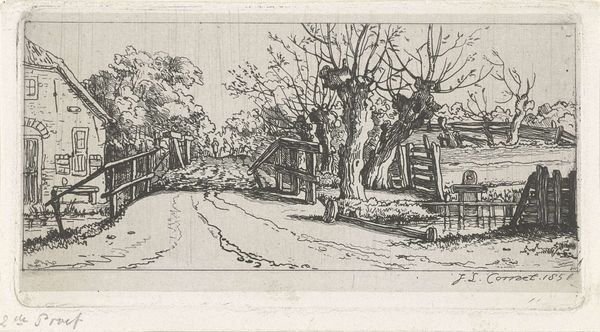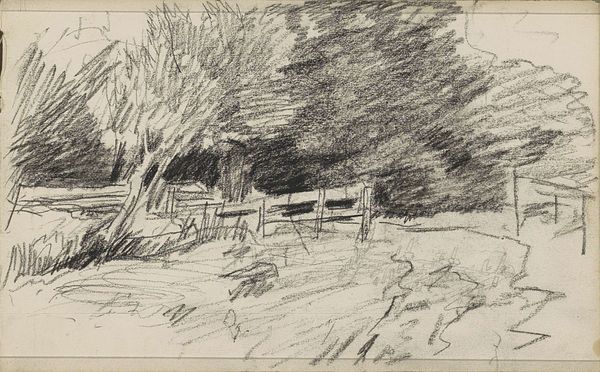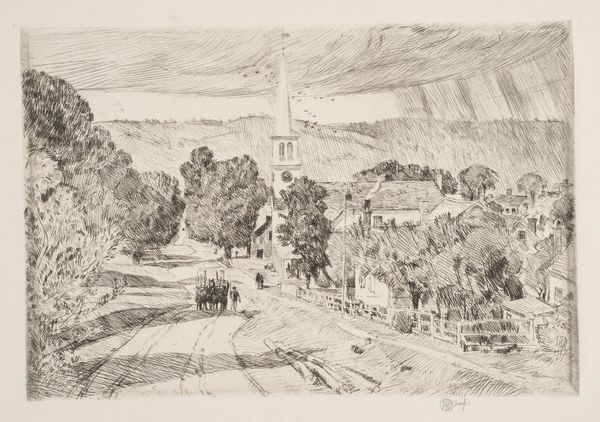
#
landscape illustration sketch
#
ink drawing
#
pen drawing
#
pen illustration
#
pen sketch
#
ink drawing experimentation
#
pen-ink sketch
#
pen work
#
sketchbook drawing
#
initial sketch
Dimensions: height 65 mm, width 104 mm
Copyright: Rijks Museum: Open Domain
Curator: Welcome to the gallery. Here we have a pen and ink drawing titled "Laan tussen bomen," or "Lane between Trees" by Coen Metzelaar, likely created sometime between 1855 and 1881. What's your first take on this piece? Editor: Immediately, I am struck by the feeling of enclosure despite the open path. The dark, heavy foliage presses in from above and the sides, creating a sense of being hemmed in, even as the road invites movement forward. It speaks to the complicated relationship between nature, access, and the individual. Curator: It's a dynamic tension certainly present in the composition. The linear perspective of the road draws the eye deep into the picture plane, yet the density of the hatched ink work creates a flattened surface, preventing complete illusionism. Observe how Metzelaar uses repetitive strokes to define form and shadow. Editor: Right, that tension seems intentional. The chaotic energy of the linework juxtaposed with the strict lines of the road creates a push-pull relationship. The marks might reflect a sense of restricted freedoms in a society rapidly industrializing, the natural world simultaneously a place of escape and confinement. Were public spaces accessible to all during this period, or were there unspoken rules regarding who could traverse such lanes? Curator: The social aspect of land access would definitely impact the reading of this artwork. From a purely visual point of view, consider the repeated verticality within the work, in both the trunks of the trees, and in the fencing that runs on both sides of the lane. This verticality helps generate the aforementioned sensation of being confined despite the availability of passage. Editor: And to that point, the fencing. Who erected and maintained this border? Why? What does a fence communicate in a landscape? And whom does it keep in or out? The trees that hang so heavily, were they planted and cultivated, or untamed growth allowed to spill over into spaces designated human. These considerations inevitably connect the artwork to social stratification, landscape control, and who belongs in specific geographies. Curator: These are indeed critical points that cannot be separated from the formal considerations of lines, shapes, light and shadow. Together, they amplify this otherwise straightforward image into a reflection of power structures and their implications. Editor: Exactly. It is more than just a lane between trees; it is a testament to a time where the very earth was becoming politicized through ownership and control. Curator: I will now perceive landscapes very differently; thanks for pointing out new approaches to seeing.
Comments
No comments
Be the first to comment and join the conversation on the ultimate creative platform.

